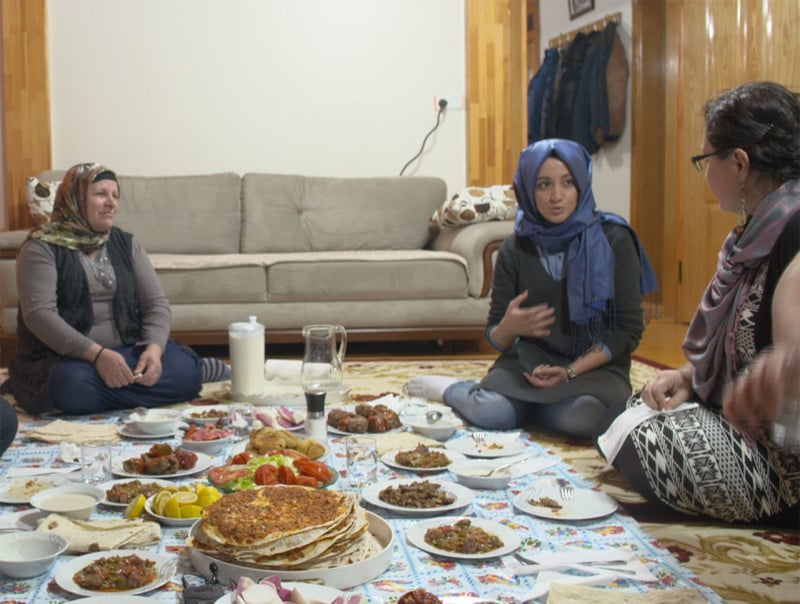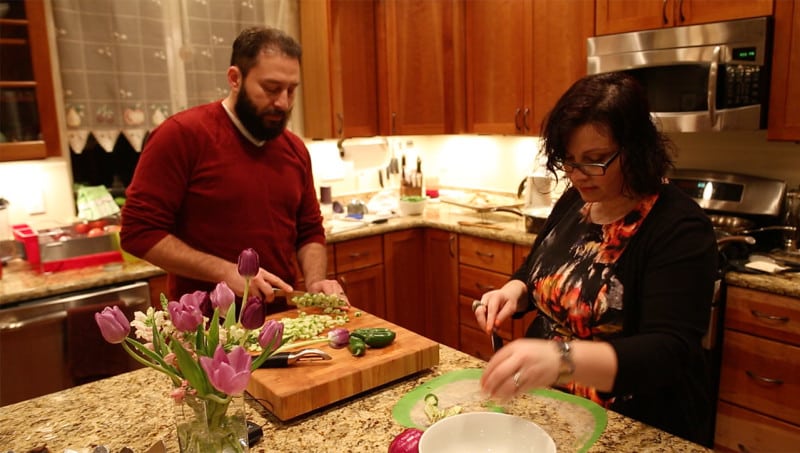Tables of Istanbul: The Journey of a Turkish Girl into Alaska
How to maintain your own culture in a different locale.
She picked up the round vegetable and turned it in her hand for a few seconds, then whispered to herself, “What is this? A coconut?” “It’s jicama,” I told her.
She tried to find it in the codebook and asked the next cashier, “Hey, hick-ammo is not under h. What is the code?”
Then she picked up the Scotch bonnet pepper and asked me what it was. Next, she held up the kohlrabi and waited for my response. It was not like I had anything as exotic as durian in my shopping basket, but she sure acted like it. As I was bagging my produce she chuckled and said, “I don’t know what you are cooking up in that kitchen of yours. Weird voodoo food?”
This was my introduction to grocery shopping in Anchorage, Alaska, in 2008. Maybe it was just that one cashier, as Anchorage had Korean and Middle Eastern markets as well as an Asian specialty store and a health food store. I might, by chance, have gotten a teenaged cashier grossed out by produce who thought fruit meant “apple” and vegetables meant “potatoes.” Or was this indicative of something else?

In Alaska, most of the produce in markets is usually past its prime after the long trek up from The Lower 48 (that’s what Alaskans call the rest of the United States). I grew up in the Mediterranean with an impressive variety of produce and local farmers markets available year-round. Then I lived for over a decade in Arizona, bordering the agricultural heavens of Mexico and California. Sun-ripened tomatoes were not a big deal, and easy access to fresh vegetables was taken for granted.
This was not the case in Anchorage. My friends said how lucky we were to live in the big city of Anchorage, since people up north, in rural areas, had no access to such luxuries. Never mind the environmental cost or transporting produce to Anchorage – the prices even further north were jaw-dropping. I can’t say that I felt lucky.
As I cooked Turkish dishes in Alaska, using tomatoes, eggplant and peppers, I started to question the ethical consequences of insisting on a Mediterranean diet in such a climate. Perhaps I should switch to moose, salmon, and halibut, and have a more locally-focused diet of root vegetables.

These reflections commenced a cascade of emotions. I was a sociologist who taught university classes in race and ethnicity. Did I need to cook Turkish dishes in Anchorage? Was I to lose my Turkish identity if I didn’t express it on the table? I became curious about my overtly nationalistic tendencies in the kitchen. Although I was – and am — really turned off by patriotic tendencies, I had to concede my Turkishness when it came to my behavior in the kitchen. Did I really have to cook Turkish dishes when I entertained? Could I not serve Indian or Chinese foods or good old apple pie? Was I subconsciously suggesting that I could only be good at making what was in my DNA?
My inner dialogue shifted to avoid responsibility for this uncomfortable problem. It must be my guests! Yes, my American guests expected me to cook Turkish dishes and so I did, to avoid disappointing them. They could get rhubarb pie elsewhere, but there were only a handful of Turks in Alaska.
Ah, so is that why you cook the most stereotypical Turkish food that you never cooked (or ate much of) while you lived in Turkey?
Well, no. Americans liked meat so I chose main dishes that have protein. Hence the Sultan’s Delight. They expected lamb so I gave them lamb. And then they already knew of baklava, so it would be a sure hit. It was just pragmatic and smart menu planning.
Oh I see, it is not you stereotyping your cuisine, it is the Americans shoving you into the Turkish corner, is that it? You poor victim.
Well no, they mean well and so do I. I mean, should we really complicate food this much? Honestly, shouldn’t we just enjoy it without the hundred and one questions?
I became preoccupied with the identities we reflect onto our dinner tables, and how I “represented” Turkish cuisine. As an immigrant, I found this burden of representation difficult, as I wanted to transmit accurate information and worried about failing. I had a growing desire to study food culture and its connection to identity. But, to be honest, I wanted to answer these questions for myself by traveling back to Turkey and getting acquainted with one of its food meccas, Istanbul.

I began a research proposal but couldn’t bring myself to write a paper on the subject. This is what we academics do: present papers, write articles, and publish books. But the topic of food, with its gorgeous visuals and increasingly obsessive mainstream following, deserved more than containment in an academic journal with a limited readership. What if I made a movie about it? What did I know about documentaries, aside from watching them often? Much to my surprise my colleagues in my writing group urged me to push forward. Were they thinking about more Turkish food to consume under the guise of research feedback?
But writing a paper does not cost money, making a movie does. To my astonishment, I found four granting agencies who would give me sufficient funds to make a movie. Were they crazy? Or was I that good at selling my ideas? After my initial happiness and gloating, panic set in. I knew nothing about script writing, storytelling, cinematography or editing.
With no other choice, I assembled a capable and experienced film team. We shot our way throughout Istanbul, talking to famous chefs, activists, food writers, and home cooks who invited us to their dinner tables. In the process, I learned that geography is crucial to shaping the contents of our table and our food preferences. Ethnicity does not dictate the content of our tables; rather history, climate, and location are all central to how we come to think of ourselves through our food. Accordingly, I came to think that it is not because of my genetics, but rather my history in a specific geography, that I prefer and long for certain dishes and ingredients in my kitchen.

As my residence in Alaska extends with no expiration date, I can’t help but think that my table will look different in ten years. Moose burgers might accompany baklava, salmon will probably take over lamb dishes, and these combinations will feel just as authentic when this geography and climate seep into my bones. Salmon börek? I am not there yet but welcome a happy marriage of Turkish, Alaskan and American dishes on my table. Cliché or not, what tastes good and brings us around the table together will represent my cuisine and me just fine. No doubt it will reflect the geographies I occupied.
Ayten Sultan’s Su Böreği recipe is a classic in our family. Even though you can buy this börek at every street corner in Turkey and save yourself many hours in the kitchen, my mom makes it lovingly and eagerly when my brother Engin and I visit with our families every summer. Back in the USA, Engin and I attempted to replicate her recipe and we must say we did Momma proud. She made video calls (seven!) throughout the afternoon to help us along.
This recipe usually makes one large börek in my mom’s copper pan with deep sides. Since we didn’t have such a beauty in our kitchens, we split the recipe into two and made two smaller pans. We tried one in the cast iron pan and the other in a nonstick pan. The cast iron one was uneven, with crisp middle but soft sides and with some parts inside left too moist, so we recommend a nonstick one if you do not have a copper pan. Mom said to use baklava flour but we are not aware of such a thing in the United States, as baklavas here are made out of prepared phyllo dough. The sacrilege! ![]()
First published February 2017


